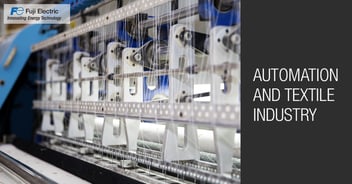Optimizing process control in cement plants
High-quality products with enhanced efficiency and lower cost are the primary focus of all industries. Several industries, including cement, are currently struggling to maintain efficiency. Process control is essential for effective production, as if operations are not regulated, the final product could not meet the specifications. The primary goal of process control is to ensure that certain procedures are followed so that the results meet predetermined standards.
Importance of process control
Rising demand for energy-efficient manufacturing processes, safety, and security concerns, and the development of IoT systems that can detect process deviations are the need of the hour. Process control and optimization are gaining importance in the manufacturing industry, and reliable processes are essential for the success of the cement industry. To remain competitive, a factory must operate effectively and continuously to provide the highest ROI (Return on Investment) at the lowest operational cost.
Process control is crucial for a cement plant to maximize the benefits of its cement production. Cement plants can achieve maximum efficiency and greater profitability with the help of process control and optimization. Process control stabilizes the plant, optimizes output, regulates and corrects process interruptions, and reduces depreciation to guarantee optimum plant performance. The technology aids in reducing operating and maintenance costs by enhancing equipment availability and usage.
Process control optimization
Changes in the cement sector are driven by the ESG (environmental, social, and governance) concepts. The enhanced implementation of process control in a cement plant can help organizations to enhance efficiency and reduce final product variability, cost, and environmental impacts caused due to the production process. Process control also enhances product quality, resulting in more effective clinker grinding. Most contemporary control systems make use of "expert control" systems, commonly referred to as "fuzzy logic" or "model predictive" controls. Utilizing online analyzers as part of process control systems enables operators to quickly ascertain the chemical make-up of raw materials being processed, allowing for quick adjustments to the raw material mix.
The cement industry is subject to stringent regulatory and environmental constraints because it consumes significant energy and emits greenhouse gases. Energy efficiency is a challenge for the industry, but it is made possible by creating a digital twin of a plant. This virtual duplicate is a superb representation of industrial reality. An industry-specific and energy knowledge base combines and analyzes data on tools, consumption, consumption patterns, and the environment.
Utilizing sophisticated process management stabilizes the kiln and cooler to offer consistent clinker quality while increasing production, reducing cyclone blockages, and reducing kiln ring forms. The increased stability will result in better performance and output, delivering better profits.
The process of making cement results in high levels of CO2 emissions Increased calls for stronger emissions laws and decarbonization from the public and governments will substantially impact the sector. According to innovation improvements, scaling up carbon capture, utilization, and storage (CCUS) technology will enable further greener, more productive facilities. When it comes to scalability, CCUS is conceivably the most complex option. In addition to pursuing carbon-cured concrete, one of the few current utilization options that incorporate CO2 into the finished product or store carbon in defunct oil and gas fields, the technology enables cement businesses to absorb CO2 emissions.
Process control enables cement manufacturers to have a real-time link with suppliers, inputs, and services utilized in cement manufacturing, enabling them to react to the demands instantly. This provides them access to consumption projections and identifies when supplies need to be replenished quickly.
Automation and digital technologies help to improve operations and make better use of resources. Intelligent control systems can reduce pollution emissions and increase alternative fuel usage. Adopting efficient solutions is advantageous for process optimization. It might collect information based on statistics and improve energy efficiency.
Achieving "Smarter" plants
Process control offers a wide range of improvement opportunities for organizations. The upcoming developments can significantly change the sector and provide more advantages. The technology advancements can sustainably deliver a cleaner future and manufacturing while upholding its ESG obligations. The sector will be able to meet all the impending challenges through the achievements made.
Added value with MV-Drive
Organizations can achieve the above-mentioned benefits by installing Fuji’s MV drive. Initially, the induced draft fans in the MV drive reduce energy loss and attain energy efficiency. The switching losses are reduced by Fuji using multilevel pulse width modulation (PWM), and harmonic losses are reduced by primary winding on input transformers. MV Drive manages every step of the process to deliver goods of consistently high quality, from production to inspection to distribution.
 China
China Europe
Europe France
France Hong Kong
Hong Kong Indonesia
Indonesia Japan
Japan Singapore
Singapore Thailand
Thailand USA
USA

